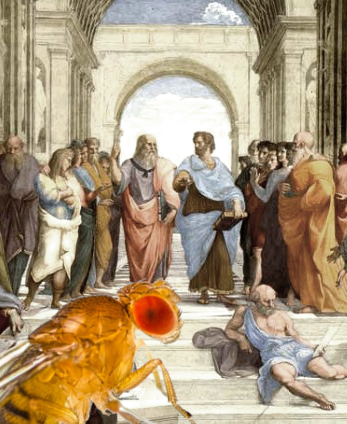Choice circuits spotted in fly brains
 New research suggests that just like humans, fruit flies show self-awareness of their actions.
New research suggests that just like humans, fruit flies show self-awareness of their actions.
Scientists have placed tethered Drosophila melanogaster fruit flies in front of a digital display, on an air-supported ball, while recording multiple parts of their brain simultaneously.
The experiment was a kind of virtual reality scenario that allowed the flies the ability to control the position of a visual stimulus (a dark bar), or showed them replayed movies of the stimulus they were not able to control.
Researchers found that when the fly was in control there was an increase in communication between brain regions, compared to when they were just responding to the very same visual stimuli replayed.
The study conducted at the University of Queenland’s Queensland Brain Institute (QBI) was built on human research that shows different parts of the brain need to work together for attention and perception to occur effectively.
“It’s really interesting that humans and flies share the ability to focus and have attention,” said QBI’s Associate Professor Bruno van Swinderen
“The difference is that we have around 100 billion neurons, and they only have 100,000 to do pretty much the same – focus on one thing at a time and select the best course of action.”
The experiments showed that each fly is an individual with its own strengths, weaknesses and preferences.
“There were actually some star performers that immediately understood whether they were in control or not, and some never seemed to know the difference,” Associate Professor van Swinderen said.
“Across our research, there is always individuality between all of the animals. They all behave differently.”
One important conclusion from this research is that understanding how attention works in the brain may might require studies of how different brain regions interact, rather than only looking at one brain region at a time.
Ms Leonie Kirszenblat, a PhD student involved in the study, said the research had important implications on how to study attention in animal models.
“Traditionally, in animal models such as Drosophila, the tendency among researchers has been to try to find single brain regions responsible for different functions,” Ms Kirszenblat said.
“However, we now know that to best understand how animals attend to and respond to their environment, we need to devise methods allowing us to manipulate and observe multiple brain regions simultaneously,” she said.
“This is now possible in Drosophila, but still hard to do in many other animals.”








 Print
Print